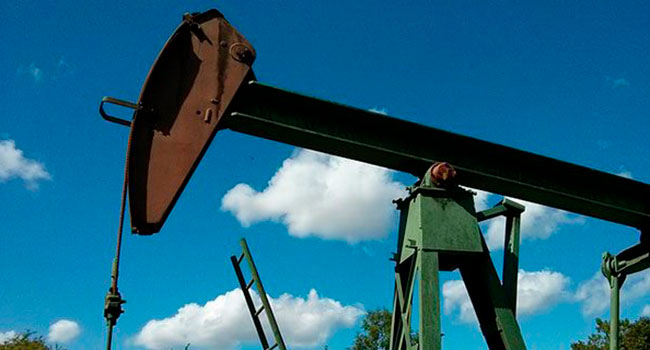 The crude oil demand picture remains murky at best.
The crude oil demand picture remains murky at best.
The U.S. Energy Information Administration (EIA) has cut its 2021 demand growth outlook to 6.5 million barrels per day (bpd), 500,000 bpd lower than projected last month.
Based on patterns, the EIA now expects Chinese demand to grow by one million bpd next year rather than 1.5 million bpd.
In its September Oil Market Report, EIA says August marked the first time during the recovery period that global supply growth surpassed demand growth. Although crude oil demand grew by one million bpd in August as compared to July, according to reporter Meghan Gordon of energy news provider S&P Global Platts, this was the slowest month-on-month consumption growth since May, when demand began recovering from COVID-19 lockdowns.
Russia’s central bank, in its worst-case scenario on the possible risks to its monetary policy over the next three years, has warned that crude oil prices may slump to $25 per barrel, TASS reported.
However, in its base-case scenario, the Russian central bank projects prices recovering to about $50 a barrel by the end of 2022. Yet the bank appears doubtful things will (ever) return to pre-pandemic levels.
In the latest sign of growing uncertainty in the crude markets, Saudi Arabia has cut its official selling prices for October. To Irina Slav of Oilprice.com, this move was hardly expected given the kingdom’s upbeat stance on oil demand.
Reports of rising oil and fuel inventories in floating storage are also putting pressure on the markets. This was particularly worrisome because it meant that onshore storage space was still full, despite an increase in fuel demand after most lockdowns were eased in May.
Chinese oil imports continued to fall in August after declining in July from a record high in June, Bloomberg reported.
And rising COVID-19 cases in India, the U.S. and elsewhere are adding to uncertainty over crude oil demand and prices.
In the meantime, Fitch Ratings has lowered its long-term price assumption for West Texas Intermediate to $50 from $52 a barrel, reflecting fragile market balances, inventory overhangs, lower break evens and the energy transition going forward.
Brent Crude prices are now expected at $53 a barrel in the long term in the base-case scenario, compared to a previous forecast of $55 per barrel.
Fitch also reduced its oil price outlook for 2022, expecting Brent Crude prices at $50 per barrel, down from $53 a barrel. West Texas Intermediate crude prices are also expected to be lower in 2022 at $47 a barrel, down from $50 a barrel.
Morgan Stanley analysts are also of the view that the short-term oil market fundamentals look “soft,” blaming “weaker-than-expected demand” for this softness.
The International Energy Agency has joined the chorus, underlining the oil demand recovery has stalled. In its August Oil Market Report, the IEA downgraded its oil demand forecast for this year by 140,000 bpd from its earlier estimates.
Pointing to struggling fuel demand and continued high uncertainty about the pandemic’s impact on economies and mobility, the Organization of Petroleum Exporting Countries (OPEC) also lowered its oil demand forecast in August.
As a result of all this, markets continue to wobble. On Sept. 8, prices tumbled to their lowest since June. U.S. benchmark futures have fallen by about 13 per cent since the end of August. And, after the Sept. 10 EIA data showing growing domestic crude supplies and wavering gasoline demand, future prices in New York fell towards $37 a barrel.
The new normal seems to have arrived and the outlook is grim.
Toronto-based Rashid Husain Syed is a respected energy and political analyst. The Middle East is his area of focus. As well as writing for major local and global newspapers, Rashid is also a regular speaker at major international conferences. He has been asked to provide his perspective on global energy issues by both the Department of Energy in Washington and the International Energy Agency in Paris.
The views, opinions and positions expressed by columnists and contributors are the author’s alone. They do not inherently or expressly reflect the views, opinions and/or positions of our publication.


